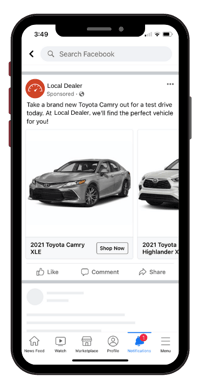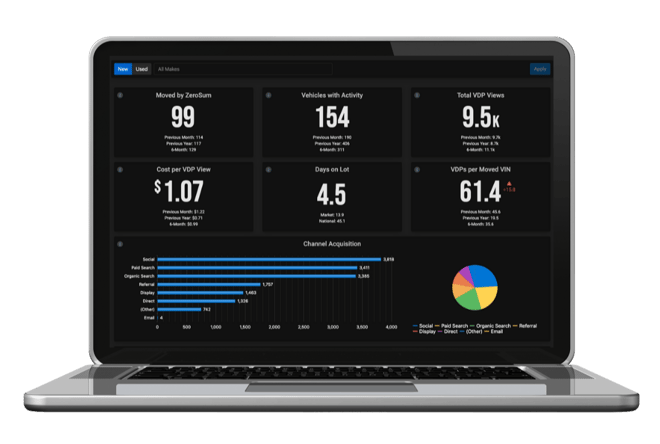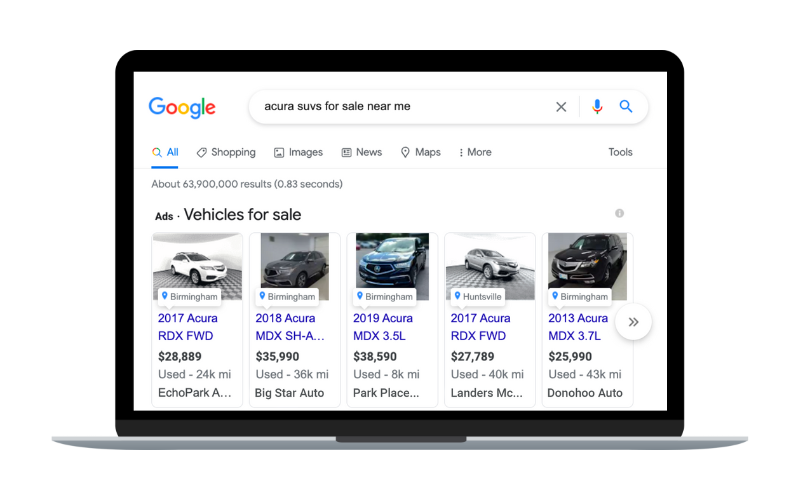How to Maximize Your Automotive Ad Spend in a Low Inventory Market
It’s a terrible feeling when you invest your hard-earned money in to advertising your cars, but you don’t end up with the results you’re looking...
.jpg)
If you were to ask 100 auto dealers what the most important metric they track is you would get 100 answers saying "sales". But are auto dealers paying enough attention to the metrics that fuel those sales? While the units that are moved each month help assess overall performance, they don't contain many insights about how to improve a dealership's strategy or how to forecast sales numbers moving forward.
First, let's review some metrics that most dealers and marketers report on, but don't really matter – we call these "vanity metrics". Vanity metrics are metrics that seem impressive but cannot actually be used to help sell vehicles or assess performance.
Impressions refers to the number of times a digital advertisement is displayed to consumers. This can be a helpful metric when assessing whether one advertising option is better than another, however, impressions don't mean that a user has actually seen or engaged with your content.
Your bounce rate is the percentage of people who make it to your website but leave without viewing any additional pages or taking an action. While your bounce rate can help you identify that your website needs improvement, it is not enough to help you identify where the problem lies. Is it your content? Navigation challenges? Mobile/tablet optimization issues? Or something else entirely?
Likes are one of the most overused and valueless metrics for auto dealers. A consumer's 'Like' on a post or a video doesn't tell you if they are a prospect or whether they are ready to buy. There's a chance they are engaging with the post simply because they are a car enthusiast or that the post features someone they know.
As a standalone metric, New Users is not particularly helpful. Your dealership's website will attract window shoppers, people who are too young to buy a new vehicle and even people who navigated there unintentionally. The New Users metric tells you nothing about the quality of your website traffic or if those new visitors are ready and willing to buy.
Your click-through rate (CTR) refers to the number of clicks your digital ads receive relative to the number of impressions delivered. CTR can be a good measure of how effective your advertising is but it doesn't hold many insights into eventual purchase behavior. The CTR of a post can skyrocket as soon as you publish something viral or controversial but that doesn't always correlate to clicks from people who have intent to purchase in the near future.
 Looking Past Vanity Metrics
Looking Past Vanity Metrics
To button up their marketing strategy, dealers need to look past sales numbers and vanity metrics and set their sights on three key areas: inventory, in-market shopper acquisition and VIN views. Together, these three metrics can act like a crystal ball giving dealers a clear view of future performance and easy opportunities to grow sales.
No matter how great your CTR is, you can't sell a car that is no longer in your inventory. Ads can only be effective if they market units that are actually on your lot so it's important that your marketing efforts update continuously. Delivering static, outdated ads leads to wasted ad spend and a poor user experience for customers. To stay on top of constant inventory changes, automation is the only way to go.
Rather than looking at New Users or other unsuitable Google Analytics data, you should be looking at New In-Market Shoppers — a metric that focuses on consumers who intend to purchase a vehicle right now. These are the consumers you want to focus your marketing efforts on.
"In-Market shopper" audiences are created by ad partners using proprietary algorithms. These profiles are constantly updated through machine learning over time to provide dealerships with the freshest prospects. You'll need to work with a partner that offers their own In-Market shopper profile to take full advantage of this marketing innovation.
One of the most granular ways to review your marketing efforts in VIN-level views. Today, you can target prospects based on the VIN of the specific vehicle your prospect has viewed previously, displaying and re-displaying ads across all channels featuring that exact vehicle. With this technology available, why waste ad dollars having your inventory displayed on a listing site or showing different cars to a buyer who already has a good idea of what they want?

To implement these best practices and significantly improve your marketing ROI, move away from metrics that don't drive sales, such as impressions and bounce rate, to metrics more closely correlated with sales performance. Narrowing your focus will also prevent you from wasting time reviewing large pools of data or optimizing to metrics that don't lead to sales.
If you shift your focus to reaching new In-Market shoppers, you have a better chance of identifying and targeting leads and converting them to customers. These audience shifts paired with automated inventory updates in your ads and intentional VIN-level ad delivery will make a world of difference to your store performance.
Working with ZeroSum, you can access the largest In-Market shopper audience in the world. With over 4 million people in our audience at any given time. We can help you identify consumers who are ready to buy while also implementing dynamic inventory-based ads to show these consumers the specific vehicles they are looking for. Interested in learning more about how our tech can help your dealership?

It’s a terrible feeling when you invest your hard-earned money in to advertising your cars, but you don’t end up with the results you’re looking...

Alongside search, video, and display ads, there is one newer web-based ad type that every car dealer needs to take advantage of: Google Vehicle Ads.

An unprecedented marketing revolution is upon us. Consumersare engaging with some form of digital consumption virtually 24 hours a day, households ...